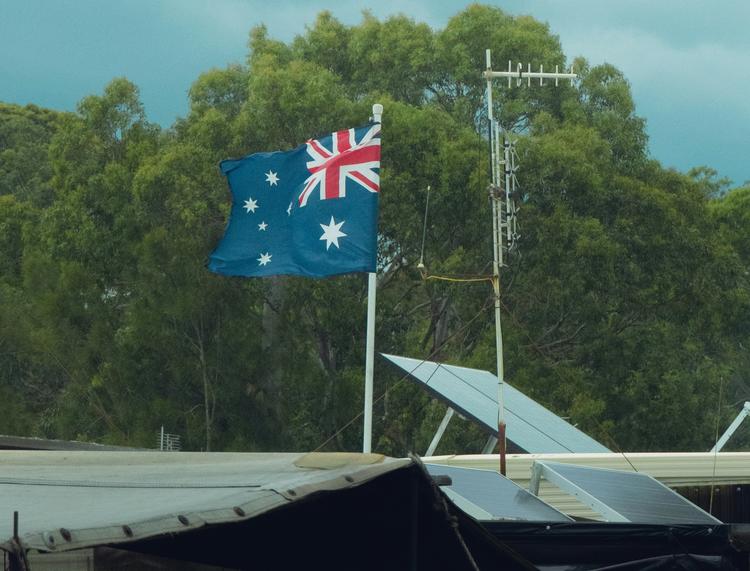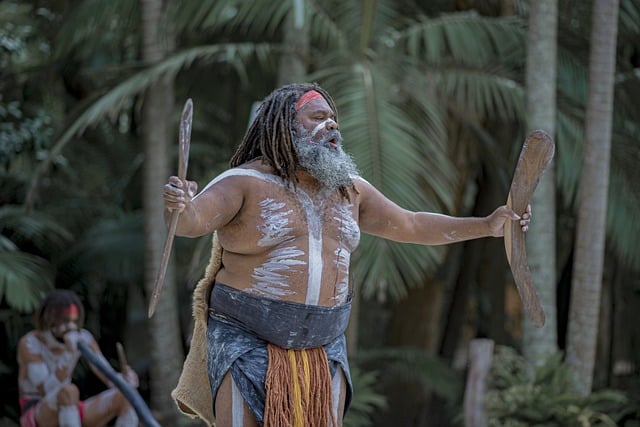(The Conversation) – Australia is on the cusp of a once-in-a-generation transformation, as our energy systems shift to clean, renewable forms of power. First Nations peoples, the original custodians of this land, must be central to – and benefit from – this transition.
That is the key message of the federal government’s new First Nations Clean Energy Strategy, launched on Friday. The government has committed A$70 million to help realise its aims.
I was part of a committee that helped guide the government on the strategy. It involved more than a year of consultation with First Nations communities across Australia, plus input from industry and state and territory governments.
Australia has pledged to reach net-zero greenhouse gas emissions by 2050. Of the renewable energy infrastructure needed to achieve this, about half will be developed on First Nations land.
First Nations peoples have cared for Country for 65,000 years. Australia’s renewable energy transition must be on their terms. The strategy released today will guide this process – so let’s take a look at what it contains.
Image by Török Töce Tibor from Pixabay
1. Get clean energy into First Nations communities
The strategy emphasises the need to establish renewable energy in First Nations communities and make homes more energy-efficient. Electricity supply to these communities is often limited, unreliable and more expensive than elsewhere in Australia.
Many remote communities across northern Australia also rely on back-up diesel power for much of the day. This is a highly polluting source of energy and hugely expensive to service.
Some remote communities use pre-paid electricity cards to access energy. This is expensive and those who cannot afford to pay often “self-disconnect” from the supply.
And remote First Nations houses – many of which are poorly built and insulated – can become dangerously hot which causes significant health problems.
2. Enable equitable partnerships
Equitable partnerships between First Nations peoples, industry and governments allow First Nations people to consent to projects on their terms. It also reduces risks, costs and delays for proponents.
The strategy aims to increase the capacity of First Nations peoples to actively take part in decisions about clean energy projects and policies.
First Nations people should have access to culturally appropriate advice and resources. This will arm them to better understand the opportunities and risks of, say, a solar farm proposed near their community.
It also means helping First Nations people participate in and benefit from projects – for example through skills training or help negotiating agreements.
Photo by João Romano on Unsplash
3. Ensure First Nations people benefit economically
In times of significant economic change, Aboriginal and Torres Strait Islander peoples have usually been left behind. This time, history must not repeat.
Acceleration in Australia’s clean energy industry will create major economic and employment opportunities. First Nations peoples must be supported to seize them. For instance, First Nations peoples comprise just 1.9% of Australia’s clean energy workforce, which presents an enormous opportunity for increased participation.
Actions identified in the strategy include supporting First Nations energy businesses, including ensuring access to financial support. Other measures include developing a First Nations workforce by building on success stories such as the Indigenous Ranger program.
Recognition of Aboriginal land rights has led to a vast estate owned or managed by Indigenous people. The majority is in remote areas in northern Australia, far from population centres. But the Indigenous estate in south-eastern Australia is not insignificant and will prove vital in the new clean energy economies.
4. Put Country and culture at the centre
The strategy calls for First Nations peoples’ connection to land and sea Country, and their cultural knowledge and heritage, to be respected during the clean energy transition.
It acknowledges that clean energy harnesses the natural elements – such as sun, wind and water – and First Nations peoples’ knowledge of Country, developed over millennia, can greatly improve the way projects are designed and implemented.
It says governments and the clean energy industry must become more “culturally competent” so they can work collaboratively with First Nations peoples.
Towards autonomy and self-determination
Actions in the strategy are designed to complement the Closing the Gap agreement, which aims to close the health and life expectancy gap between First Nations peoples and non-Indigenous Australians. Closing the Gap targets include:
- realising economic participation and development
- social and emotional wellbeing
- access to information and services so First Nations people can make informed decisions about their lives.
Several priorities identified in the strategy are already in place, to some degree.
For example, the Capacity Investment Scheme – under which the government underwrites the risk of investing in new renewable energy projects – requires proponents to demonstrate First Nations engagement and commitments.
And New South Wales’ Electricity Infrastructure Roadmap requires energy proponents to meet First Nations targets for employment and procurement.
However, much work is needed to translate the new strategy into real benefits on the ground, and to realise the aspirations of First Nations peoples for autonomy and self-determination.
A hopeful initiative
First Nations peoples are already highly vulnerable to the damaging effects of climate change. It threatens to make their Country unlivable, leading to a new wave of dispossession. For that reason and others, we need the clean energy transition to work.
The strategy is an optimistic and hopeful initiative. Done right, it will ensure the continent’s original custodians benefit socially and economically from the enormous changes ahead.
Over the last 60 years, various government policies in Australia have sought to boost First Nations economic development. But the efforts have been stymied by a lack of capacity and resources.
If this new strategy is to succeed, further funding and ongoing monitoring is needed to ensure its aims are achieved.
As Australia bids to host the United Nations climate change conference in 2026, in partnership with Pacific nations, we must show a commitment to elevating the rights and interests of Indigenous peoples around the world – including on home soil.
Heidi Norman, Professor, Faculty of Arts, Design and Architecture, Convenor: Indigenous Land & Justice Research Group, UNSW Sydney
This article is republished from The Conversation under a Creative Commons license. Read the original article.




 © 2025 All Rights Reserved
© 2025 All Rights Reserved